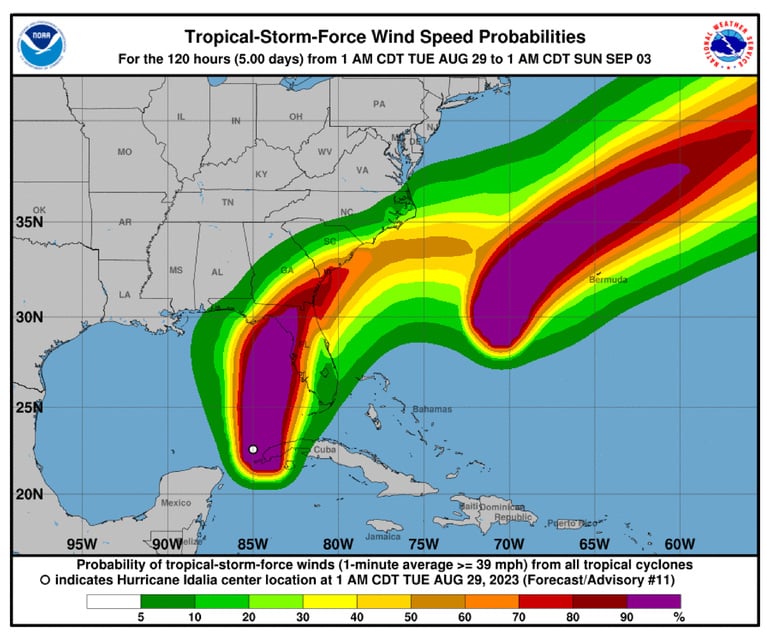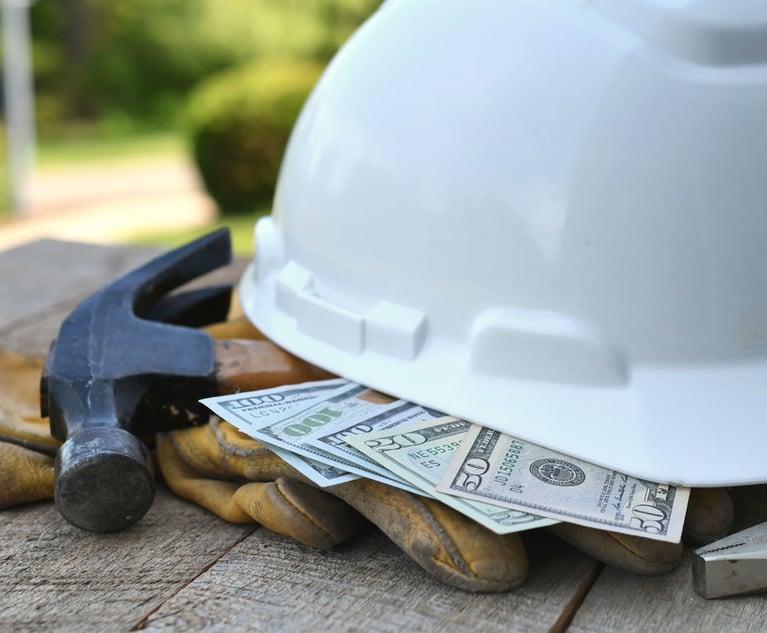Hurricane Katrina, the storm that ruined the Big Easy, was a bitlike my fourth grade teacher, Mrs. Miller. She was harsh, strict,and demanding, but we learned. Boy, did we ever learn. She taughtus lessons that we will never forget and, although I no longerremember many of the negatives, I sure remember the positives.
|If we (the United States, not the claim industry; although theremay be lessons there, too) fail to learn from the late August 2005storm that devastated the Gulf Coast and, undoubtedly atpublication time, still has adjusters scrambling to settle wind,flood, and business interruption claims, we deserve an F. Ourcurrent report card from Schoolmistress Katrina is bad.
|What are some of the subjects that she taught? First, there wasPreparedness. We sure flunked that one. Second, there wasInfrastructure. That got a D-. Evacuation: D+. Response: F-.National Reaction: B-. And one more course we are flunking atmid-term of the semester: Causation. Let's start there.
|Disaster Causation
|Hurricanes and the accompanying flooding, earthquakes,tornadoes, disease pan-epidemics, and the like are naturaloccurrences that always have been there and with which mankindalways has had to deal. How we deal with them, however, can makethem easier or harder. We know that the Black Death — bubonicplague — in Medieval times was caused by rats, but we also knowthat superstitions and silly religious beliefs made epidemicsworse.
||People thought that cats were evil. People slept with their farmanimals, allowing fleas to enter their homes and bedding. Those whoused herbs to heal were called witches and were burned at thestake. Or consider the eruption of Mount Vesuvius that destroyedPompeii in AD 79. Scientists of the day had warned that themountain could explode, but people enjoyed their fertile gardensand the view of the Bay of Naples.
|Where are the parallels today? One need look no further than thebuilding booms along the barrier islands of the Atlantic and GulfCoasts to see that disastrous calamities are in the making. When Iinterviewed Neil Frank, then director of the National HurricaneCenter in Miami, back in the 1980s, he warned of the disasters tocome. Residential and commercial interests build in harm's way,then expect the government and the insurance industry — that's therest of us, the tax- and premium-payers — to bail them out whentheir homes and businesses blow or wash away.
|There also are worldwide factors that contribute to disasters.Plague spread because rats got on ships that were sailing from portto port; today's diseases such as SARS or flu spread because peopletravel from continent to continent, although some of the spreadalso is through migrating birds. We cannot very easily preventthat.
|We know that our lifestyles, our use of fossil fuels and thelike, contribute to global warming, and global warming contributesto melting ice caps and glaciers, raising the sea level and makingthe oceans warmer, creating larger and more hazardous storms. Couldour political attitudes, our gas-guzzling SUVs and pickups, ourattitudes against using nuclear energy, wind, and hydroelectricpower, be making disasters worse? When the best science has tooffer is rejected by a large portion of the nation as beinganti-religious falsehood, it is a bit like 12th century peasants'being afraid of cats because they thought that cats represented thedevil, or declaring Galileo Galilei a heretic for discovering thatthe world ain't flat.
||Think back to the television coverage of the New Orleansdisaster, and what did we see? Hundreds of thousands of poor blackpeople, many elderly and many newborn, and every one telling ofdiseases, primarily diabetes. There are two separate problems here.One is burgeoning populations of poverty-stricken, unemployedsingle-mothers with multiple children and no responsible maleparent in evidence. The other is the vast number of adults onexpensive medications for a disease that is largely preventable. Itall made the disaster that much worse.
|Preparedness
|After Hurricane Andrew, we learned that the Federal EmergencyManagement Administration had done diddly-squat to help the victimsin South Dade County for nearly two weeks, and when they finallydid arrive, their actions were haphazard, inefficient, and overlyexpensive. Of course, our insurance industry did not do muchbetter, but at least we were on the scene sooner.
|Now it is a decade later, and FEMA had several days to preparefor what those of us who watch the Weather Channel or any cablenews network knew was coming: a Category 4 or 5 storm, aimeddirectly at the central Gulf Coast. Did FEMA have its trucks withready-to-eat meals and bottled water packed and on the road to thetarget area? Nope. They were waiting to be “invited.” Then FEMA'sdirector, Michael Brown, said that he had not known that peoplewere stranded in the Super Dome until the following Thursday. Whatthe hell had he been watching on television? The CartoonNetwork?
|Responsibility for action lies first with local and stateauthorities. A few of the local police ran away, but the rest didthe best they could under the circumstances. “The First Platoon [ofthe New Orleans Fire Department] was held over to remain inquarters with the on-duty Third Platoon,” reported Harvey Eisner inthe October issue of Firehouse. “Each district [battalion] movedapparatus out of the fire stations to higher ground or a safe placeof refuge. Downtown units went to a hotel loading dock andcompanies in outlying areas parked at condominiums.”
||What else could they have done in preparation for the storm? Didthe Governor have the Louisiana National Guard respond? No, becausethey were off in Iraq. Guard units had to come from hundreds ofmiles away to assist the New Orleans police in what was nearlyanarchy. FEMA could not get in, they said. Well, how did CNN andNBC and Fox News and ABC and CBS and the BBC get there? They didnot swim in.
|“We did not know that the levees would break,” the officialsexplained. C'mon, guys! There was even a fictional movie made aboutwhat would happen when it happened. I saw it years ago. It's likethe movie Towering Inferno; the government begged the producer toadd a disclaimer that the situations portrayed in the movie couldnot really happen. He refused. Since the World Trade Towers fell,we know that they can, and will again. Fire department ladderscannot reach beyond the seventh floor of high-rises.
|After the city flooded, I heard a number of people ask, “Whydidn't they bring in amphibious vehicles or small boats? Surelythere had to be a lot of small boats in New Orleans that could haverescued people from their homes as the water rose.” All we saw ontelevision was a pile of expensive yachts smashed together in aheap. So where were the smaller boats? Did evacuees take them withthem when they fled?
|Finally, there was interagency communication, or, rather, thelack of such. A lesson that ought to have been learned from Sept.11, 2001, is that all agencies need to have communication systemswhereby one agency can talk to another on the same radio frequency.Again, in Katrina, this was a problem. Someone explained to me thathalf the agencies had digital equipment, and the other half analog.Supposedly, new standard equipment was not in the budget. Whycannot emergency radio systems be designed with various channels,so that during multi-agency responses, federal, state, and localauthorities can talk to each other? In this day and age ofinterplanetary communication, what could possibly be so difficultabout simple radio frequencies? If digital and analog are socomplicated to coordinate, how come the rest of the world seemsable to do it?
||Infrastructure
|Oh, brother. This will take a while. A similar devastating floodof the Lower Mississippi Valley in 1927 that did kill thousands atleast stirred Congress to create a flood control program, althoughit took decades. During that flood, the citizens of New Orleans sawthat a wall of water was headed for them. They dynamited the leveesabove the city, allowing the torrent to flood into LakePontchartrain, inundating St. Bernard Parish.
|Prior to that, western states had been trying to get aconservative Congress to pass a bill creating flood control on theColorado River, but southern senators were opposed, just as westernsenators had been opposed to flood control on the Mississippi. TheGreat Flood resulted in a compromise between the two politicalforces, allowing the creation of the Army Corps of Engineers andthe construction of Hoover Dam.
|Before Katrina struck, we knew the levees and the flood-wallsalong the canals were weak. The Corps of Engineers had been beggingfor a billion or so to strengthen them for years. As with Amtrak,the administration budgeted peanuts, hoping that the problem woulddisappear.
|It disappeared, all right. And what is it going to cost now tomake the proper repairs? Our government is penny-wise and poundfoolish, as old Ben Franklin might say.
|Then, I heard the army general in charge of the corps tell areporter that even if they had received the money that they hadrequested, repairs to the levees that broke were last on theirlist, and probably would not have been repaired in time anyway.What?!! Repairs of the weakest parts were to be left for last?Kyrie eleison.
|Commercial infrastructure — gas and oil pipelines, refineries,oil platforms, docks, and warehouses — fared somewhat better in thewake of Katrina, but one refinery blew up, a tank farm was ruined,and the nation can ill afford to lose the oil. We have built no newrefineries in a decade or more, and that is shameful, given ourknown dependence on oil and gasoline.
||Industry has used the excuse, “Well, people don't wantrefineries in their back yards.” Oh, bull. Do these executivesnever travel? There are lots of open areas near nobody's back yardwhere refineries could be built. They do not need to build onexpensive urban real estate. With modernization, fewer employeesare needed to run such facilities, so they do not need to be nearlarge urban areas at all.
|What about the railroads? The Gulf Coast is served by severalmajor lines, including CSX from the east, Kansas City Southern,Canadian National and Norfolk Southern from the north, and BNSF andUnion Pacific from the west and northwest. Amtrak operates fourmain routes from the city, northward to Chicago and New York,eastward to Orlando, and westward to Texas and Los Angeles.
|The Bush Administration wants to kill these trains, because theycost more to run than they produce in revenue. They serve manysmall towns, however, that have no other means of transportation,so Congress keeps them poor and barely alive. Suppose, given theroughly three day's notice that a storm would hit the Gulfsomewhere between Pensacola and New Orleans, 200 coaches had beenbacked into these towns to assist with evacuations? At, say, 60people per coach, that's 12,000 people who could have beenevacuated per trip and, over two days, a dozen or more trips couldhave been operated. Of course, where would evacuees have beendumped? Probably the same places they wound up anyway.
|Commuter trains in cities such as Chicago, New York,Philadelphia, or Boston carry far more than that every morning andevery evening. New Orleans Mayor Ray Nagin said that he had wantedto run a passenger train to Baton Rouge; his request was declined.Although it could have saved lives, 200 coaches were not available.Amtrak probably had no coaches in New Orleans.
|Our rail passenger service is part of our nation'sinfrastructure. If federal money can support the infrastructure ofMississippi and the Tennessee-Tombigbee navigation, operate theFederal Aviation Administration's programs for airlines, and theInterstate Highway System for buses and trucks, why pick oninter-city rail passenger service and starve it to death when, inthe event of a terrorist attack or Hurricane Katrina, such railservice might be absolutely necessary, and the only way to get outof town?
||Evacuation
|The folks who could afford to leave apparently did so. They areto be congratulated. Some refused to leave even if they could haveafforded it. They did not want to leave their pets. As this isbeing written, those folks still are in the morgue, waiting forsome dentist to identify them from whatever records may beavailable. For the vast number of poor who could not afford toevacuate and who stuck it out in the Super Dome or in their homeswith no food or water, many of them have lost everything. And thatis a national shame.
|Those folks probably would have lost everything anyway, butthere ought to have been some way to get them evacuated within atleast 36 hours of the storm's passing. Instead, it took a week.“The buses are coming!” they were told. Holy Moses, Houston is only362 miles west of New Orleans. At 55 miles per hour, that is onlysix and a half hours.
|Hence, my suggested D+ grade: A+ for those who left before thestorm hit, F- for the government planners, both state and federal,who piddled around till the levees broke and flooded the place.True, some evacuation routes had inbound lanes changed to outbound,but even that was not universal, leaving the good students who didleave town sitting in monumental traffic jams, running out offuel.
|Response
|Aid workers from southeastern states were directed by FEMA tomilitary bases where, instead of organizing help, they were givenseveral days of lectures on dealing with diverse cultures. Morethan a month later, we learned that FEMA was paying millions ofdollars a day to house evacuees in hotels, ignoring a glut ofavailable apartments in southern and southeastern cities that couldhave been used to help evacuees start over. The squabble over floodversus wind insurance issues will rage on for years, much of it inthe courts. I anticipate that folks who had $500,000 mortgages and$250,000 federal flood insurance policies who lost their homes butstill owe their banks $250,000 will find good lawyers and sueinsurance agents who could have told them excess flood insurancewas available on the market for a price. Enough said. Response getsan F-.
||To its credit, the nation (and maybe Congress) did react,although reaction through local, state, and federal governments wasterrible. Churches and other aid organizations chipped in to sendfood, water, clothing, infant supplies, and other items as quicklyas possible. By the time this is published, the needs will still bethere, and may well have grown. What will the grade be then? Willwe have forgotten all about Katrina and her victims?
|There will be a need for new homes, new schools and hospitals,new jobs for those who lost those things in the storm and flood.There will be cities to be rebuilt from the ruins of New Orleans,Biloxi, Gulfport, and other devastated communities. There will beeconomic repercussions from delays in shipping, costlier fuel, andadditional hurricanes. Pensacola, more than a year after theirdisastrous hit, is still recovering. Response remains an openquestion.
|We cannot fool ourselves into thinking that we can go back to apre-Katrina world any more than we can return to the 20th centurybefore Sept. 11, 2001. We must learn from Katrina how to preparebetter, to prevent, to make infrastructure our primary concern, toelect politicians who will lead and not just stand by and wringhands, saying “We're doing the best we can.” It was too late to be“doing;” the work needed to have been done well in advance.
|What effect Professor Katrina will have on the insuranceindustry is not yet clear. Supposedly, around 40 percent of NewOrleans homes had flood insurance. One wonders how many of thoseflooded homes where the poor resided were rental properties,perhaps owned by slumlords. Those with only wind coverage will getnothing, but probably less than half the loss was insured anyway.The industry is predicting a $25-billion insurance cost. How muchof that may be lost to fraud and mismanagement is anyone's guess.Reinsurance bills will rise; if epidemics follow, as may welloccur, medical insurance costs will rise. Definitely, our taxeswill rise. Let's hope that even though we deserve a failing grade,we will not be forced to repeat the lesson.
|Ken Brownlee, CPCU, is a former adjuster and risk manager,based in Atlanta. He now authors and edits claim adjustingtextbooks.
Want to continue reading?
Become a Free PropertyCasualty360 Digital Reader
Your access to unlimited PropertyCasualty360 content isn’t changing.
Once you are an ALM digital member, you’ll receive:
- All PropertyCasualty360.com news coverage, best practices, and in-depth analysis.
- Educational webcasts, resources from industry leaders, and informative newsletters.
- Other award-winning websites including BenefitsPRO.com and ThinkAdvisor.com.
Already have an account? Sign In
© 2024 ALM Global, LLC, All Rights Reserved. Request academic re-use from www.copyright.com. All other uses, submit a request to [email protected]. For more information visit Asset & Logo Licensing.








